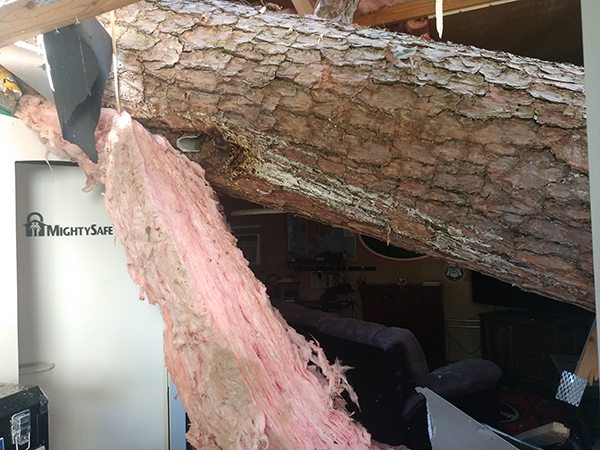How soon can I get a shelter?
We keep our most popular sizes in stock. If you would like a quote, visit our contact page and fill out the form.
What happens if the shelter is hit by lightning?
Concerns over safety in lightning storms for occupants of storm shelters have led to searches for applicable science or expert opinion. Little published information has been found that addresses directly the shelter safety issue. The advice of engineers and scientists with extensive research experience in
lightning safety is reflected in this Standard. Some evidence has been provided by experts on the subject of metal structures indicating that metal enclosures shield the interior from the effects of outside sources of electricity. The public intuitively acknowledges this principle when driving automobiles during thunderstorms. The “metal box” represented by a conventional car or van yields a skin effect that becomes the conductor and protects the occupants. More in-depth understanding can be obtained from the Boston Museum of Science,
(http://www.mos.org/sln/toe/cage.html).
Dr. Michael F. Stringfellow, Chief Scientist, PowerCET Corporation, states, “Metal structures are selfprotecting
and rarely a lightning hazard for the occupants. Even thin metal can safely conduct lightning currents without needing lightning rods or down conductors.”
BG (ret.) Claude B. Donovan, project officer for development of the Army’s Bradley fighting vehicle, points out that “… tanks and armored vehicles get hit by lightening all the time, and in many cases they are uploaded with their basic loads of ammunition, pyrotechnics, and fuel. There isn’t even a conscious April 2001 effort to make the ammo or packing materials conductors or insulators, so grounding must not be a big factor.”
WON’T THE SHELTER JUST BE BLOWN AWAY?
No chance of this happening. The shelter is mounted to the concrete slab in a home exceeding FEMA guidelines. There is no report ever recorded of a tornado ripping the foundation from the ground.
How is the shelter anchored?
anchor blurb

What sizes are available?
Our most popular sizes are normally in stock. Call for availability.
4x4, 4x6, 4x8, 6x6 and 6x8
Who installs the shelter?
The shelter will be installed by our company or a certified dealer in your area. It takes a 2 man crew about an hour and a half to do the installation.
what happens when a tree lands on it?
The owners of this shelter opened the door and removed their personal items.

Is the mightysafe Shelter wheelchair accessible?
Our storm shelter is the perfect solution for wheelchair and scooter users as well as those with limited mobility to access stairs that are typically an obstacle for in ground shelters. The standard shelter height is 80″ inches with a 30" inch door allowing most wheelchair users to easily roll right into the shelter. We also offer a full 36" wide door.

Isn’t the only way to survive an EF5 tornado is to be underground?
Many people have said that the safest place to survive an EF5 tornado is to be underground. This is not true! There has never been a report of an injury or death from people taking cover in above ground shelters tested and certified by the Texas Tech Wind Institute. In many ways, an above ground shelter is a much better choice.
How long does it take to install a tornado shelter in my home?
- A MightySafe saferoom can be installed in as little as (2) hours in most homes.
- A Storm-Tek in-ground, shelter can be installed in as little as (4) hours.
How many tornadoes are there in an average year?
- Click Here to NOAA website for the latest information:
Why are mightysafe shelters safer than a concrete bunker in my yard?
- You never leave the safety of your home to access the shelter. Why venture out into the storm facing hail, lightning, high winds, and heavy rain when you can be safe in your own home?
- In-home shelters don’t deteriorate like an outdoor shelter. Most concrete shelters will begin to condense moisture and worse yet, grow mold, within just a few years after installation. They also tend to collect insects and other unwelcome guests because they are outside in the yard.
Why do in-home shelters cost more than the yard bunker?
In-home shelters are constructed differently than yard bunkers. The materials used, as well as the engineering and certification involved, yields a much safer product. The goal is to provide the best possible protection for your family, not cut corners to just "get a shelter."
- The MightySafe saferoom is constructed of solid plate steel and square steel tubing, which is far more costly than a few yards of concrete and some re-bar.
- It is an engineered product, with professional engineer certification
- It is assembled by certified welders, not by a few guys that can pour concrete.
- Has passed all testing by the Texas Tech University Wind Engineering Program.

